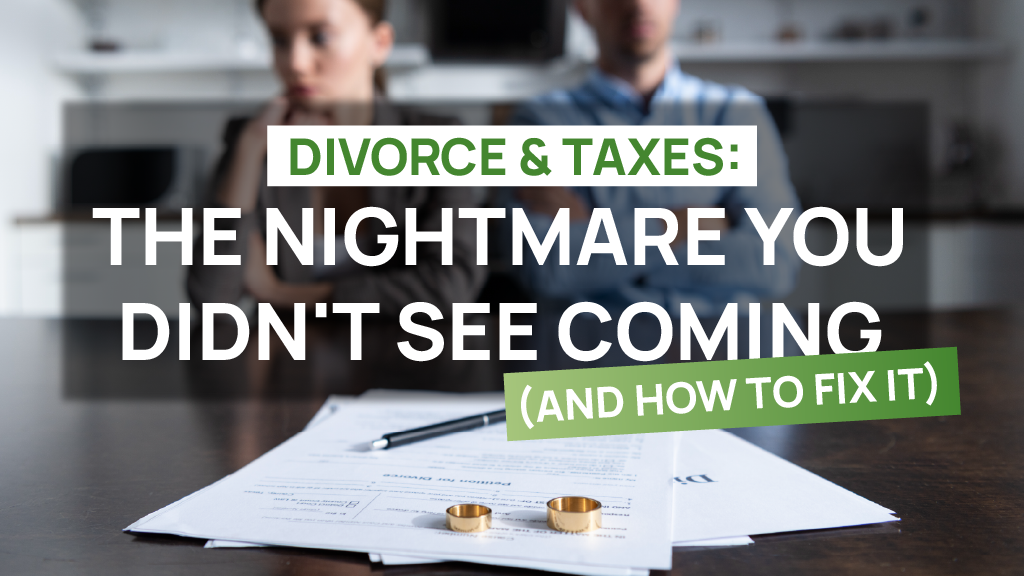Written by: Thomas Brooks
Published: March 31, 2025
Divorce is a complex legal and financial process that can have significant implications on your tax situation. Many couples overlook the tax consequences of their separation, only to face unexpected liabilities later.
One critical area to consider is how divorce affects tax debt and the available relief options. Understanding the nuances of joint tax liability, IRS relief programs, and post-divorce tax obligations can help individuals navigate the process more effectively.
How does divorce impact tax debt?
When a couple files a joint tax return, they are both legally responsible for any taxes owed, even after a divorce. This concept is known as joint and several liability, meaning that the IRS can pursue either spouse for the entire tax debt, regardless of what the divorce decree states. This liability extends to:
- Unpaid taxes from jointly filed returns
- Penalties and interest accrued due to late payments
- IRS audits that reveal additional liabilities from past joint returns
How is tax debt divided in divorce decrees?
During divorce proceedings, a court may assign tax debt responsibility to one spouse through a divorce decree or settlement agreement. However, this does not override IRS regulations. If the responsible spouse fails to pay, the IRS can still pursue the other spouse for the full amount.
To mitigate risk, individuals should ensure that their divorce agreements address tax obligations clearly and seek legal and financial counsel before finalizing the settlement.
What is the tax filing status after a divorce?
After a divorce, individuals must file their taxes separately. The tax filing status changes depending on the timing of the divorce:
- Married Filing Jointly (MFJ): If the divorce is finalized after December 31 of the tax year, the couple may still file jointly for that year.
- Married Filing Separately (MFS): If the couple is still legally married but living separately, they may choose to file separately.
- Single or Head of Household (HOH): If the divorce is finalized before December 31, the individual must file as single or, if eligible, as head of household, which provides better tax benefits.
What are the relief options for tax debt after a divorce?
Recognizing the financial burden tax debt can impose, the IRS offers several relief options for divorced individuals struggling with liabilities incurred during the marriage.
1. Innocent Spouse Relief
This relief option allows an individual to avoid responsibility for taxes, penalties, and interest if their former spouse misreported income or claimed fraudulent deductions without their knowledge.
To qualify, the applicant must prove:
- They had no knowledge of the errors on the joint return
- It would be unfair to hold them liable for the debt
2. Separation of Liability Relief
Separation of liability relief allows divorced or legally separated individuals to divide tax debt based on each person’s actual responsibility. This option is useful for those who can prove their former spouse was responsible for the error leading to the tax debt.
Eligibility requirements include:
- Being divorced, legally separated, or not living with the ex-spouse for at least 12 months
- No knowledge of underreported or erroneous items on the joint return
3. Equitable Relief
If a taxpayer does not qualify for an innocent spouse or separation of liability relief, they may still apply for equitable relief. This applies when it would be unfair to hold one spouse responsible for tax debt due to extenuating circumstances, such as financial abuse or deception
4. Offer in Compromise (OIC)
An Offer in Compromise allows taxpayers to settle their tax debt for less than the full amount owed. The IRS considers this if:
- The taxpayer cannot afford to pay the full debt
- Paying the full amount would cause undue financial hardship
- There is doubt about the collectability of the debt
To apply, the taxpayer must provide a detailed financial statement and demonstrate an inability to pay the full amount.
5. Installment Agreements
For those who cannot pay their tax debt in full, the IRS offers installment agreements, allowing taxpayers to make monthly payments over time. This can help divorced individuals manage their financial obligations without facing aggressive IRS collection actions.
6. Currently Not Collectible (CNC) Status
If an individual cannot afford to make any payments, they can request a Currently Not Collectible (CNC) status. This temporarily halts IRS collection efforts, though interest and penalties may continue to accrue.
What are the steps to protect yourself from tax debt after a divorce?
To minimize tax-related complications during and after divorce, consider the following steps:
- Review Joint Tax Returns: Before signing a joint return, ensure that all income, deductions, and credits are accurate.
- Consult a Tax Professional: Work with a tax expert to understand potential liabilities and relief options.
- Request IRS Account Transcripts: Obtain a copy of your IRS transcript to review past filings and liabilities.
- Negotiate Tax Debt in the Divorce Settlement: Ensure that tax obligations are explicitly addressed in your divorce agreement.
- Monitor IRS Notices: Stay alert to any IRS notifications regarding past joint returns.
- File Separately When Possible: If still married but facing divorce, consider filing separately to limit liability.
Conclusion
Divorce can complicate tax matters, leaving individuals vulnerable to unexpected tax debt. Understanding joint tax liability and the available relief options can help mitigate financial risks. Whether through innocent spouse relief, installment agreements, or an offer in compromise, there are ways to manage tax debt effectively. Seeking legal and financial guidance ensures that individuals can navigate these challenges while safeguarding their financial future.
